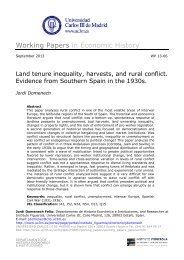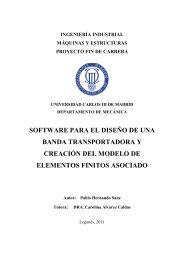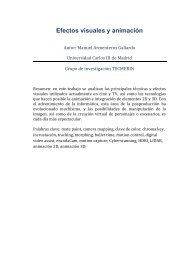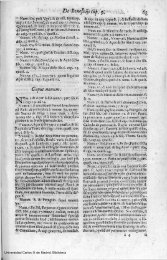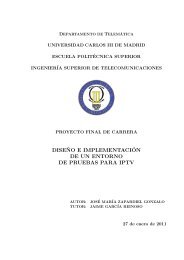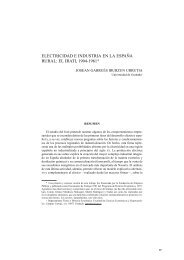Métodos miméticos de pasos fraccionarios - E-Archivo - Universidad ...
Métodos miméticos de pasos fraccionarios - E-Archivo - Universidad ...
Métodos miméticos de pasos fraccionarios - E-Archivo - Universidad ...
Create successful ePaper yourself
Turn your PDF publications into a flip-book with our unique Google optimized e-Paper software.
§2.3 spatial semidiscretization: a cell-no<strong>de</strong> mfd method 17<br />
( i− 1<br />
2<br />
( i− 1<br />
2<br />
• •<br />
, j+ 1<br />
2<br />
•<br />
, j− 1<br />
2<br />
) ( i+ 1<br />
2<br />
⊗<br />
) (i+ 1<br />
2<br />
, j+ 1<br />
2<br />
•<br />
, j− 1<br />
2<br />
Figure 2.4: Stencil for the discrete gradient operator located at the internal no<strong>de</strong><br />
(i, j). Symbols: • : Ψ h ·,·; ⊗ : (G X Ψ h )i,j, (G Y Ψ h )i,j.<br />
where each in<strong>de</strong>x (k, ℓ) corresponds to one of the vertices in the (i+1/2, j +1/2)cell<br />
and the weights are given by:<br />
ω i+1/2,j+1/2<br />
i+k,j+ℓ<br />
= |T i+1/2,j+1/2<br />
)<br />
)<br />
i+k,j+ℓ |<br />
, (2.18)<br />
2 |Ωi+1/2,j+1/2| being |T i+1/2,j+1/2<br />
i+k,j+ℓ | the area of the triangle in the (i + 1/2, j + 1/2)-cell which<br />
contains the angle at the (i + k, j + ℓ)-no<strong>de</strong> (see Figure 2.3). It is easy to see<br />
that such weights satisfy the following properties (cf. Shashkov (1996); Hyman<br />
and Shashkov (1999)):<br />
ω i+1/2,j+1/2<br />
i+k,j+ℓ<br />
0,<br />
1∑<br />
k,ℓ=0<br />
ω i+1/2,j+1/2<br />
i+k,j+ℓ = 1. (2.19)<br />
2.3.4. Discrete gradient operator. In or<strong>de</strong>r to <strong>de</strong>rive the discrete gradient<br />
operator G : Hs → Hv approximating G, we shall impose a discrete analogue<br />
of formula (2.10), i.e.:<br />
(DW h , Ψ h )Hs = (W h , G Ψ h )Hv, (2.20)<br />
for all Ψ h ∈ H 0<br />
s and W h ∈ Hv. Therefore, the discrete gradient is obtained as<br />
the adjoint of the discrete divergence, G = D ∗ , in the discrete inner products<br />
(2.16) and (2.17). Note that G and D are <strong>de</strong>fined in such a way that their<br />
corresponding domains and ranges are mutually consistent.<br />
Now, if we apply the <strong>de</strong>finitions (2.16) and (2.17) to the formula (2.20) and<br />
subsequently insert (2.15) into the resulting expression, we can obtain an explicit




